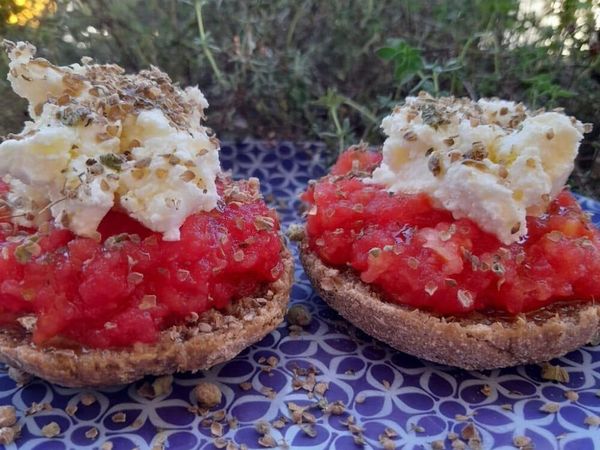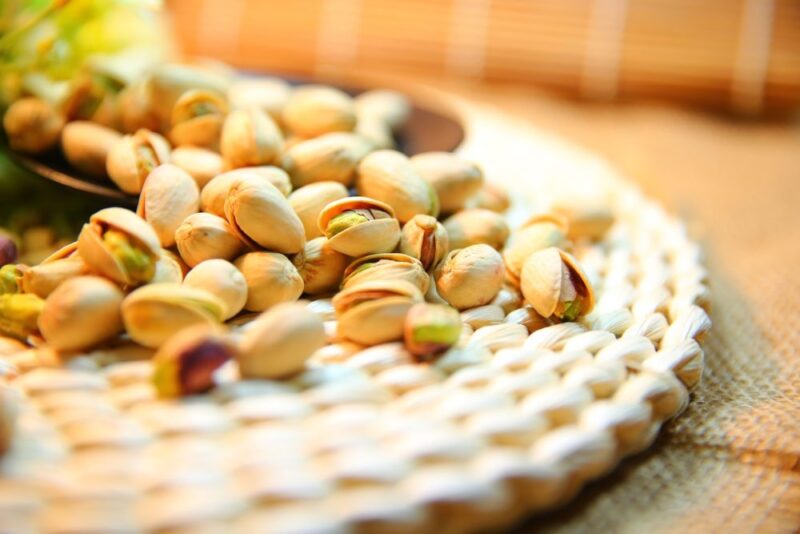Crete, the largest Greek island, is known for its rugged mountains, wild canyons, clear beaches, hardy people and its ultra-healthy diet, known as the Cretan diet. But what does this famous diet consist of? What do the Cretans eat to live a long and healthy life? How did the reputation of the Cretan diet, recommended today by doctors around the world, come about?
The Cretan diet, synonymous with frugality
Crete is today one of the most important places of the Greek gastronomy. Indeed, the island has a geography and a climate that favor the cultivation of the most diverse plants. The high mountain pastures provide high quality meat and dairy products. And the sea completes the diet of the Cretans with fish, seafood and shellfish.
However, in traditional food, diversity does not necessarily rhyme with opulence! If the Cretans have survived wars and food shortages, it is thanks to the sobriety of their diet. Until the middle of the 20th century, their daily life was reduced to frugal meals, consisting of vegetables, salads of cooked or raw wild herbs sprinkled witholive oil, dry barley bread and local wine or brandy. With a little fresh cheese and yogurt, goat or sheep.
The other dishes (meat, fish, sweets) were seasonal complements, even exceptional, kept for holidays and special occasions.
The Cretans, and especially the Cretan women, have shown great inventiveness, transforming their meager daily resources into quality dishes. This is what makes the reputation of the traditional cuisine of the island, today considered as a very rich and varied cuisine. But don’t dream: the Cretan diet consists of eating little, products that protect the vital functions of our body.

Who “invented” the Cretan diet?
In Crete, the population has been applying the principles of the Cretan diet for thousands of years. The research of the archaeologist Paul Faure (La vie quotidienne en Crète au temps de Minos) has shown that legumes and vegetables were the basis of the diet of the Cretans of the Minoan period. This use of olive oil, herbs such as oregano or bulbs was intended to reduce the bitterness and insipidity of these ingredients!
The traveler Joseph Pitton de Tournefort who visited Crete around 1700 reports a population that is not interested in food and even eats the parts of the plants that the donkeys neglect, namely the roots ! Not enough to salivate!
Much later, after World War II, observers sent to Crete by the Rockfeller Foundation found the people there in excellent health, despite the hardships. In their reports, they mention the products commonly used by the Cretans: vegetables, wholemeal bread, olive oil.
Finally, in the 1950s, the American scientist Ancel Keys studied the influence of food on health, comparing eating habits in 7 countries, including Greece. The results of the study proved the benefits of the so-called “Mediterranean” diet, based on the almost exclusive consumption of olive oil.
Thus, the worldwide reputation of the “Cretan diet” was launched.

What are the basic ingredients of the Cretan diet?
The olive oil
In Crete, almost everything is cooked with this fat, rich in oleic acid, a monounsaturated fat, polyphenols and vitamin E. These substances have strong anti-inflammatory and anti-oxidant properties that promote the health and flexibility of our arteries. They help us keep our blood pressure down, reduce inflammation and boost our metabolism. In concrete terms, olive oil contributes to the prevention of heart disease, stroke, diabetic conditions, perhaps even cancer and dementia.

Vegetables, fresh fruits and legumes
Even today, the Cretans, like all Greeks, eat pulses 1-2 times a week, salads and fresh fruit every day and cooked vegetables daily. In Crete especially, the collection and preparation of wild herbs is a very present tradition. More thana hundred kinds of wild herbs and roots are used to make salads, pita breads or cooked dishes.
Whole grains, a must for digestion
Barley was one of the basic ingredients for making traditional bread. In its complete version, it contains about 20% fiber! Enough to boost our intestinal transit and regulate our metabolism. In Crete, wholemeal barley flour is used to make paximadia, the dry round breads that are the basis of dakos (Cretan bread with tomato, fresh cheese and olive oil, a delicious treat!) The dakos alone concentrates the main ingredients of the Cretan diet!

A little protein
To provide protein to their food, the Cretans mainly consume cheese made from goat or sheep milk, from animals that live outside most of the time. This milk is closer to human milk and, therefore, more digestible. They are often fresh cheeses, therefore containing less fat.
In traditional cooking, meat, also of goat or sheep, is a rare product. Roasted at a distance from the fire (antikristo), it allows the grease to drain away. Fish and shellfish are cooked fresh. We also eat a lot of small fish, like sardines, rich in omega 3. Finally, snails are very popular in Crete and cooked in many different ways.
All this with a little alcohol and a lot of exercise
Local wine, consumed in moderation, helps prevent cardiovascular and inflammatory diseases and reduces blood sugar levels. The brandy (tsikoudia) produced with the island’s grapes boosts the metabolism. But more than anything else, alcohol contributes to social life and exchange, which are dear to the Cretans and fundamental to the well-being of each individual. Moreover, the alcohol is always accompanied by mezzes and is enjoyed slowly, in small quantities and in good company. Before going back to the rough roads of the mountains, to go fishing or to harvest olives!

What about today? Is the Cretan diet still relevant?
Food has changed a lot in the last 50 years. Meat and animal fats, processed products and white flour have entered our lives and, of course, the Cretan diet. The wild mountains are crossed by car and sobriety has given way to excessive consumption! Nevertheless, the Cretans are very attached to their traditions, including food. The family meal is homemade most of the time and always contains a lot of vegetables. And the island’s population benefits from a pleasant living environment, a less stressful daily life, and healthy air with relatively little pollution.
What to keep an iron health for a long time!
Evi S.
You can also read our article What to eat in Crete: the Cretan cuisine secret of longevity




